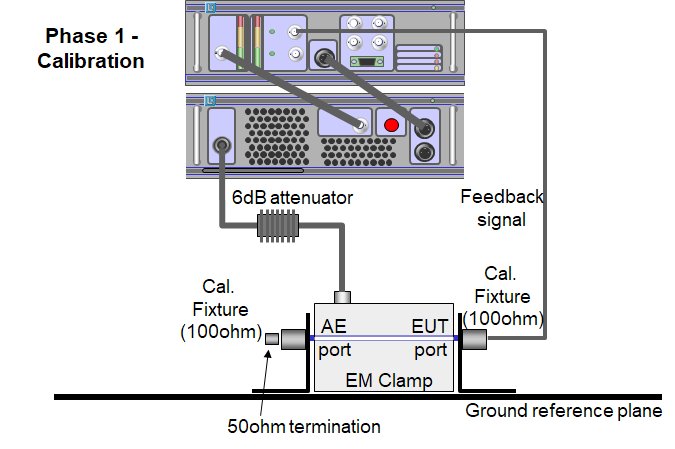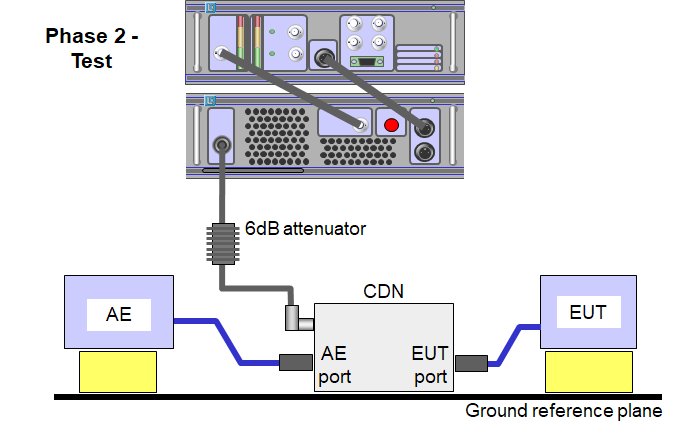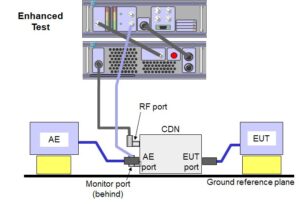This standard refers to the testing of products to check their ability to operate properly when subject to conducted RF interference. Usually the signal is swept between 150KHz and 230MHz and 1KHz modulation is applied. This RF signal injected into the product via cables such as the mains power lead or any other leads. The typical level applied is 10Vrms but this may vary from 3Vrms to 18Vrms according to the environment in which the product will be used.
Generally, the RF is generated by a signal generator, put through a power amplifier and applied to the cable via a CDN (coupling-decoupling network). This CDN applies the signal via a capacitor within an impedence matching network to ensure consistency and uniform coupling across the whole frequency range. Although the CDN is the preferred method, other injection techniques may be used (such as BCI, Bulk Current Injection, or the EM Clamp). However BCI is known to give inconsistant results and requires a higher level of injection whilst the size and cost of the EM clamp can be prohibitive.
During the test, the product is supported off a ground plane (typically at 10cm spacing) and all other cables are fed through similar CDNs to ensure that the product is decoupled from its associated equipment at these RF frequencies. Therefore to conduct such a test, a CDN is required for each cable normally connected to the product
Conventional technique
The standard specifies that prior to applying the test to the product, the input power level must be calibrated by connecting the CDN to a calibration adaptor and adjusting the input power level at each test frequency so that the required level (eg 10Vrms) appears on the CDN output. The calibration adaptor is then removed, the CDN connected to the cable and the test is then run using the same power level settings.


Enhanced technique
An enhanced technique offered by Laplace is to use an enhanced CDN and control the level directly. This 'closed loop' control system offers better accuracy and eliminates the need for separate calibration adaptors, an RF millivotmeter and (because the 6dB attenuator is no longer required) only half the power amplifier power is required.

Laplace offers a complete integrated test system using the enhanced techniques comprising of:
-RFIC-4-6 signal source (which includes the PC Windows control software)
-RF0250 power amplifier
-Range of CDNs.
-BCI clamps
-EM clamp with calibration fixture
-Calibration fixture for BCI clamp

